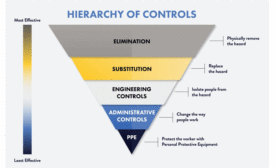Home » accident prevention
Articles Tagged with ''accident prevention''
Leading Safety
How to proactively manage construction safety through pre-operational planning
Discovering the ‘why’ of risk
May 22, 2023
Become a Leader in Safety Culture
Build your knowledge with ISHN, covering key safety, health and industrial hygiene news, products, and trends.
JOIN TODAYCopyright ©2025. All Rights Reserved BNP Media.
Design, CMS, Hosting & Web Development :: ePublishing









